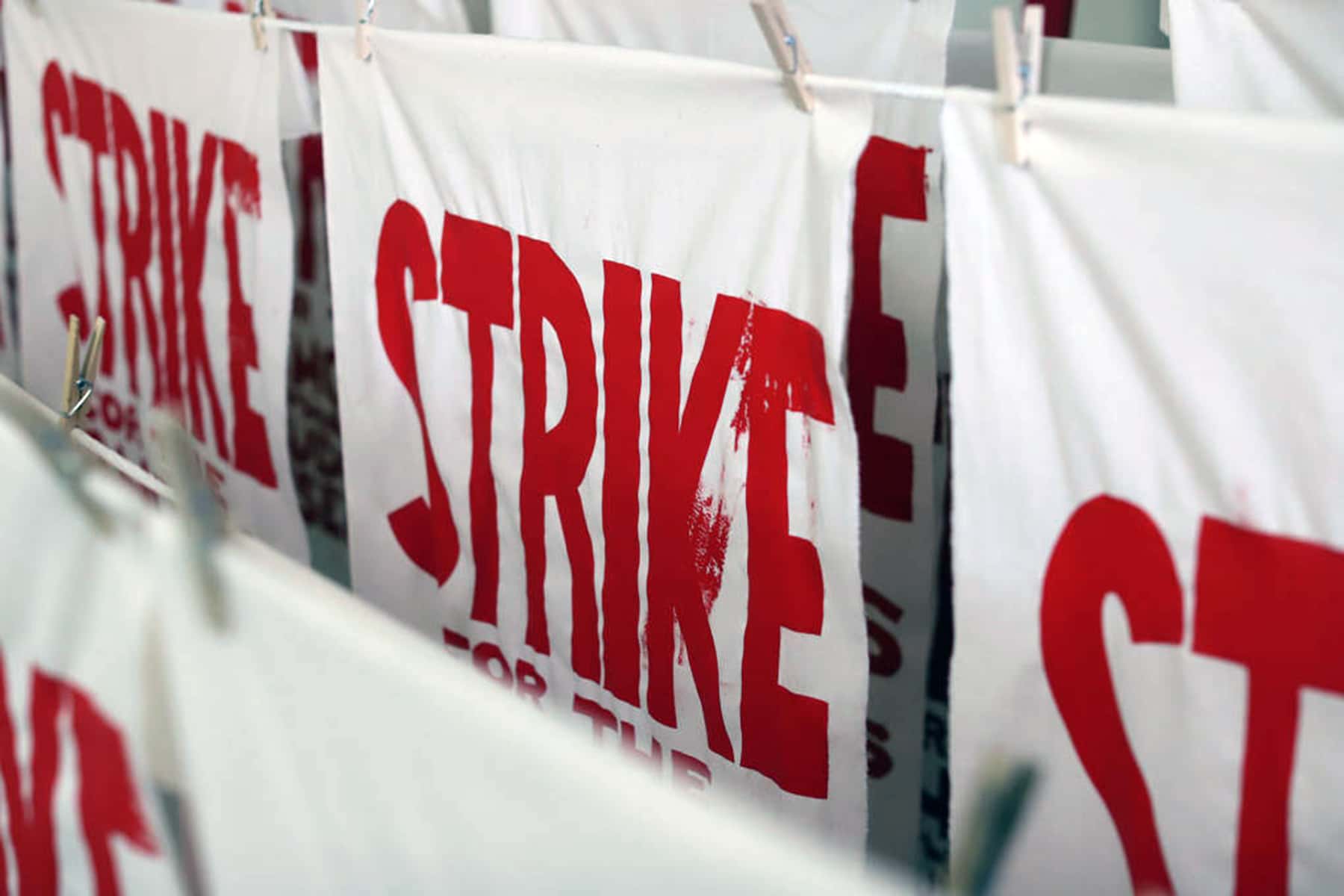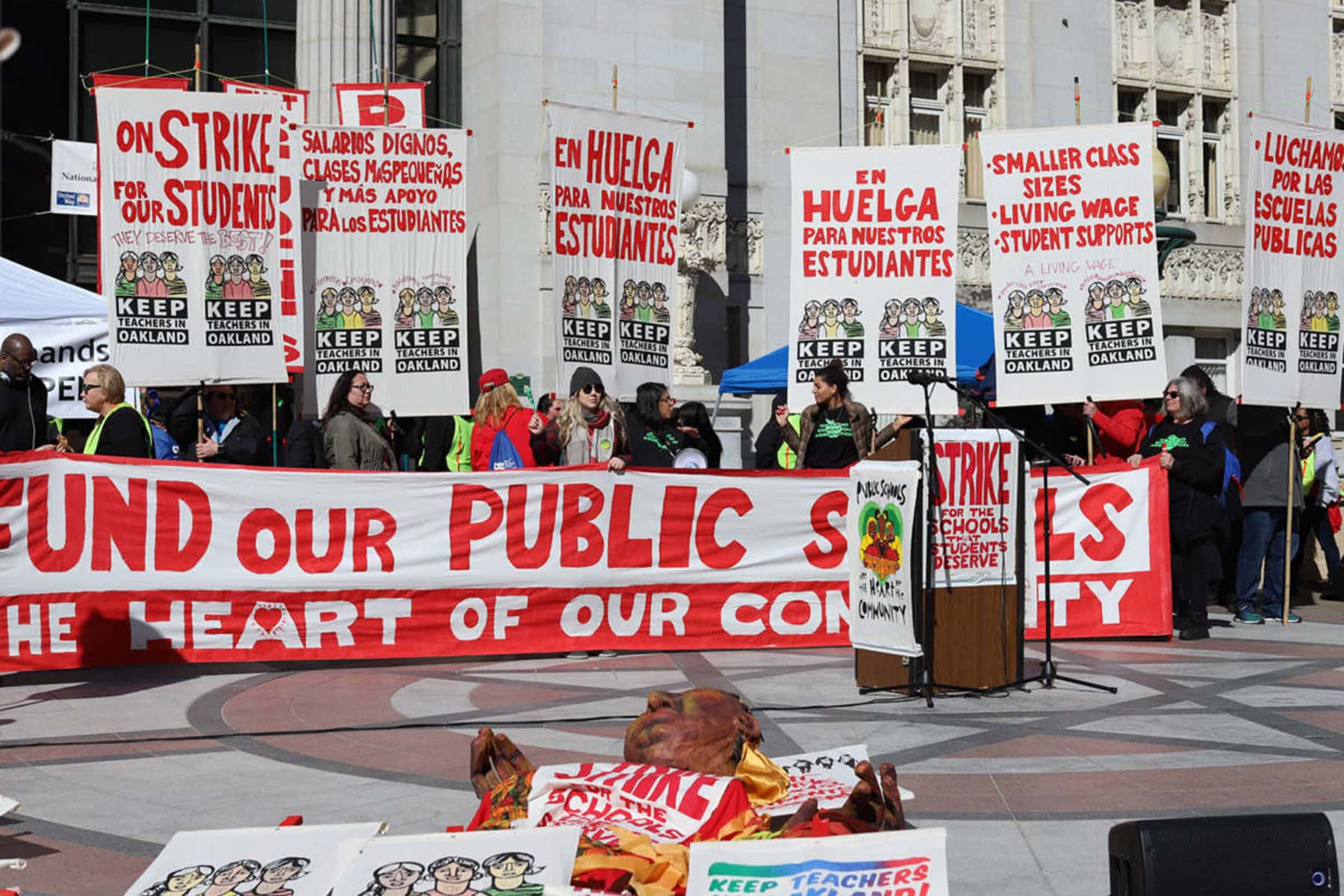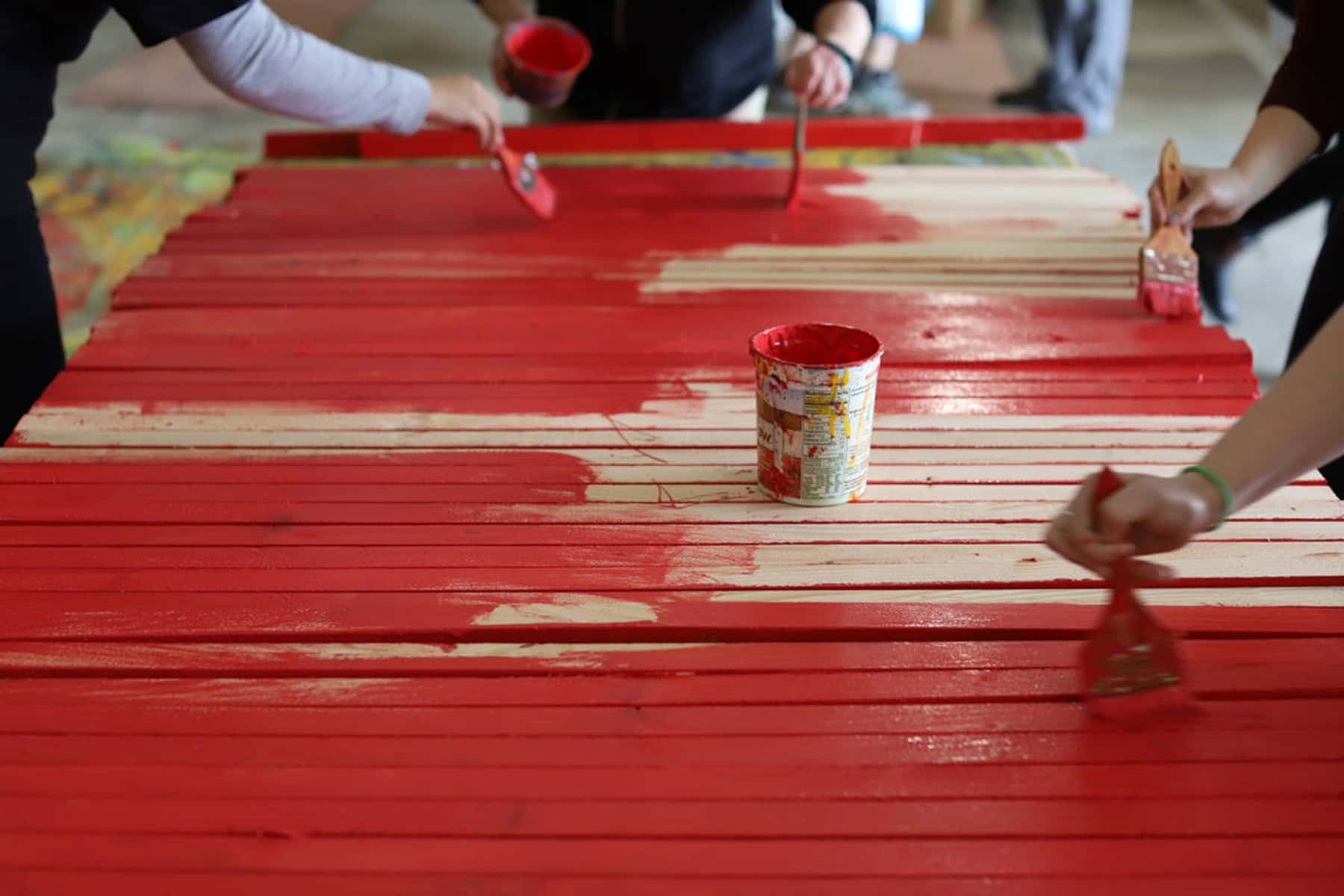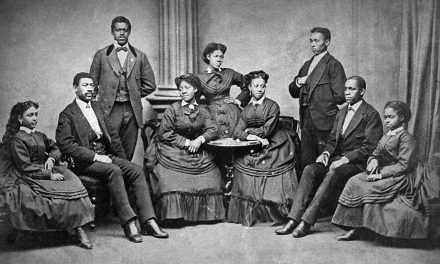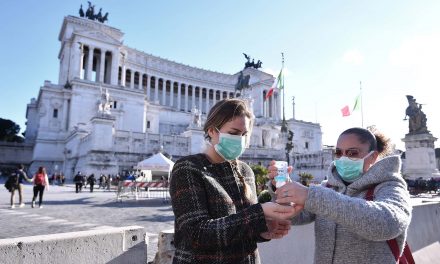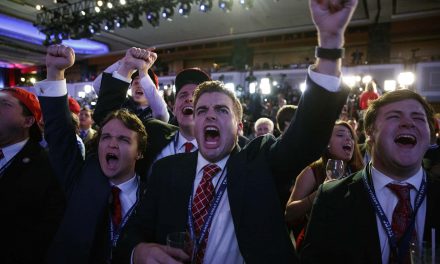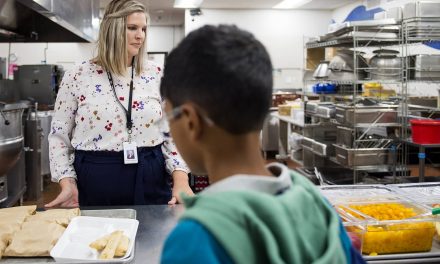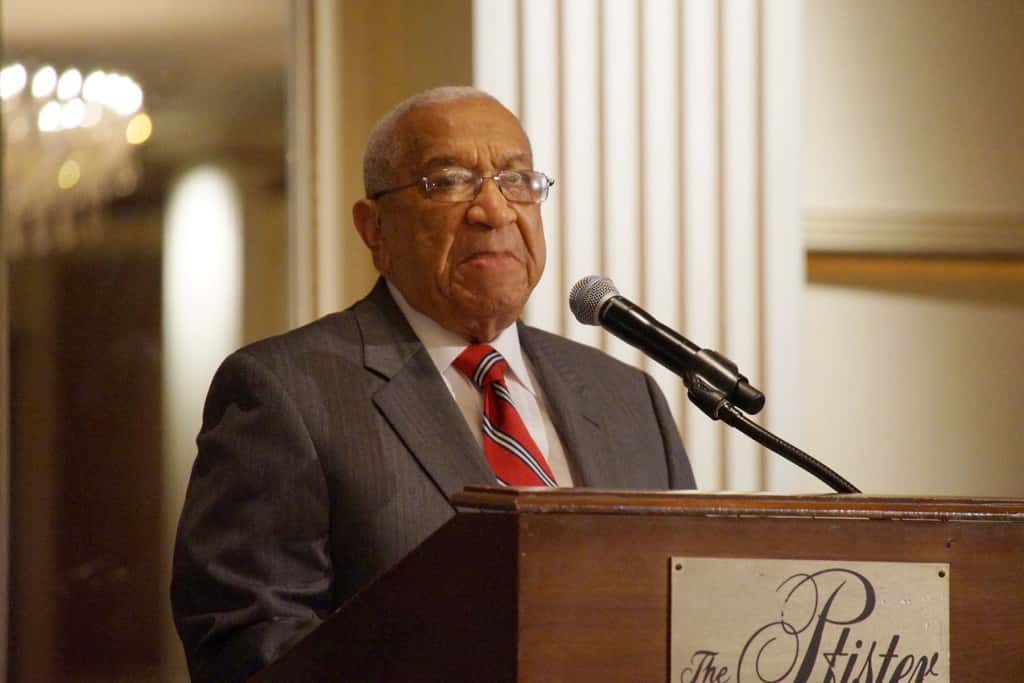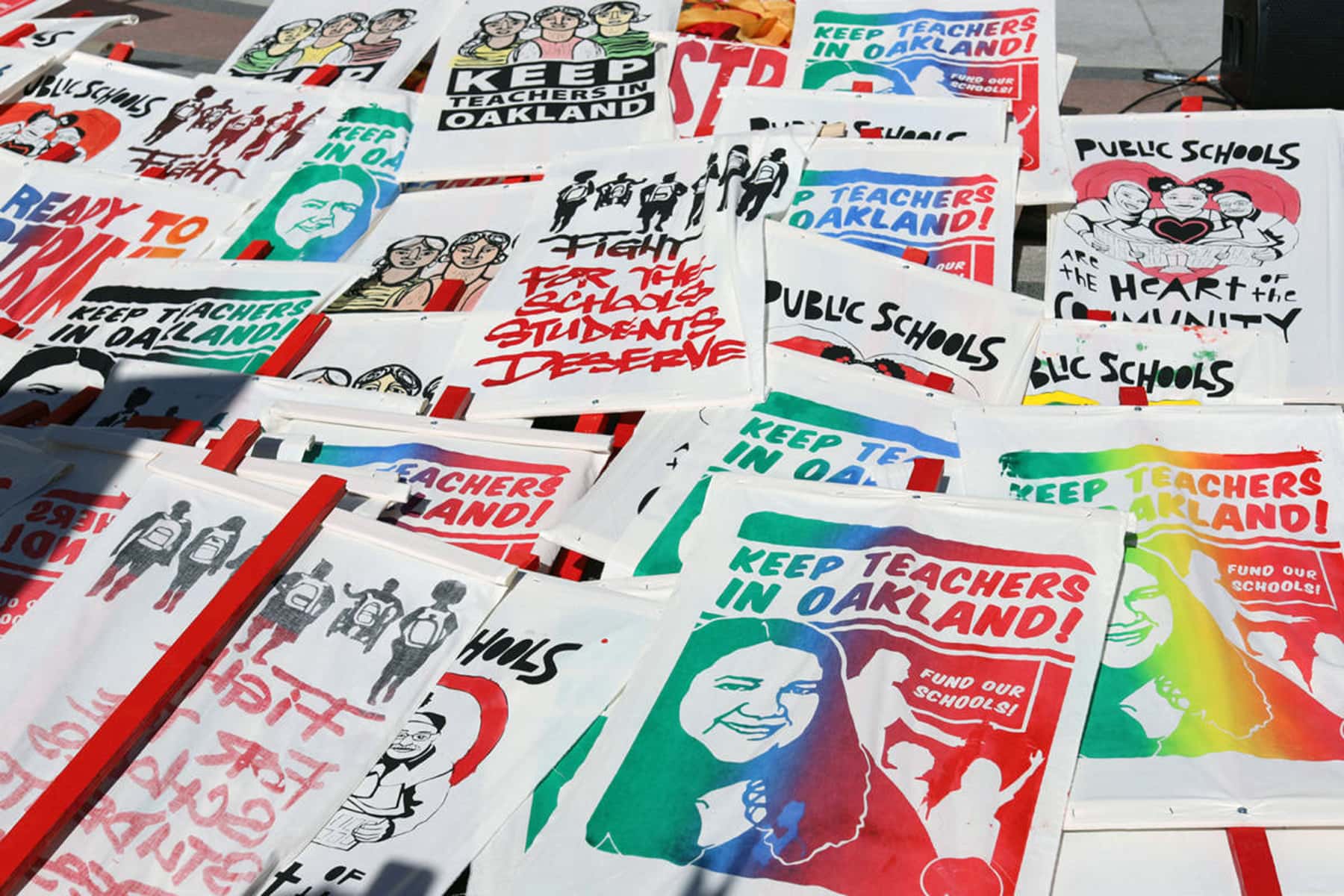
In a parking garage below the Oakland teachers union headquarters, Milwaukee advocates joined dozens of volunteers who labored over the banners, posters, and picket signs illustrating a historic strike.
A crowd of retired and current educators, college students and district parents with their children turned out for the third “art build” supporting the Oakland Education Association, whose 3,000 members are currently on strike as the union negotiates for higher wages and smaller class sizes.
They spent a morning cutting canvas, assembling picket-signs and screen-printing images sourced from local artists, including Melanie Cervantes, Favianna Rodriguez and Micah Bazant. The dominant color was red, while the messages, rendered boldly alongside illustrations of women and backpacked children, centered on fighting for the schools teachers and students deserve.
David Solnit, an environmental-justice organizer who has also married to an educator in Berkeley, brought materials and helped coordinate the event.
“About 15 years ago I started reaching out to artists and performers to get involved with actions because, at their core, social movements are really about storytelling,” said Solnit. “And the arts are the most powerful way to tell stories.”
The model, common in activist circles, is gaining traction in public education advocacy. After organizing art builds in the Midwest, Joe Brusky and other workers with the Milwaukee Teachers Education Association got the attention of the National Education Association. Since then, they have traveled to Los Angeles and Oakland to bring people together over pro-union artwork.
“Generally a union gets 5,000 copies of the sign made at the union printer and everyone’s holding the same one,” said Brusky. “That can be powerful, but it’s not as connected, it’s not as grassroots as collecting multiple images from artists in the surrounding community.”
In January, Solnit and union supporters logged three 12-hour days to produce more than a thousand posters and signs, including several enormous, hand-painted banners. The event on Sunday served a practical purpose—more signs for picketers at school sites—but it was as much about continuing to build community and momentum for the labor struggle, according to Brusky.
“It gets artists talking about the movement to their followers, who come to the actions,” said Brusky, crediting art builds with a significant role in striking Los Angeles teachers recent victory. “I do social media for my union, but here, everyone’s doing social media for the union.”
So what makes a good pro-labor design? Some artists, he noted, worked from portraits of actual California educators.
“Privatizers have made the issue of education in this country really complex,” said Brusky. “So we need to humanize and personalize the issue. In today’s world, the social media world, it’s like memes: one image with a little text goes a long way.”
Solnit brought his experience as an activist to the art build. Tall banners, seen resting against Oakland City Hall during recent rallies, were constructed similarly to ones at Standing Rock. They can withstand high-speed wind and rain, and the canvas is fairly thin. The material allows backlighting to make the message pop, much like a stained-glass window.
Solnit said he has never seen a national union stress art in a labor struggle like the National Education Association, which was subsidizing Brusky and his fellow organizers to spread the art build model to other locals. The effort seemed to help with recruitment. For some volunteers, including a UC Berkeley student, it was with their first encounter with organized labor.
“There’s magic to seeing something on the picket line and knowing you made it,” Solnit said. “And as any teacher will you, at the end of the day humans are meant to make things together.”
Sam Lefebvre
Sam Lefebvre
Originally published as Meet the Screenprinters and Artists Behind the Oakland Teachers Strike

